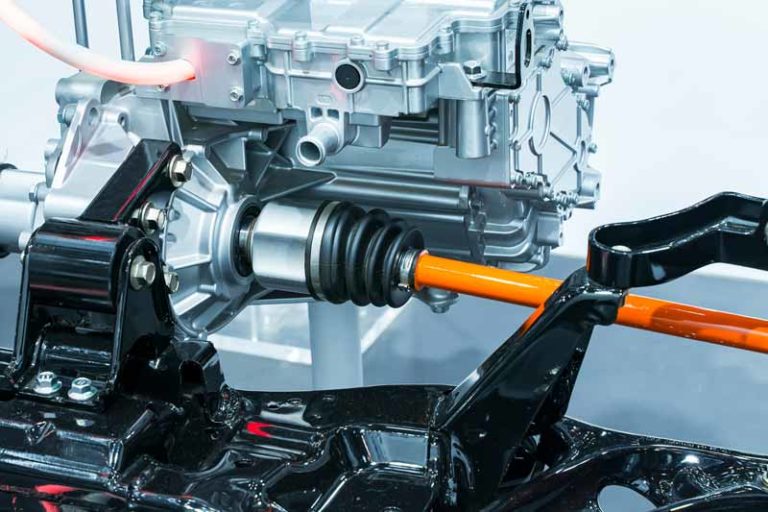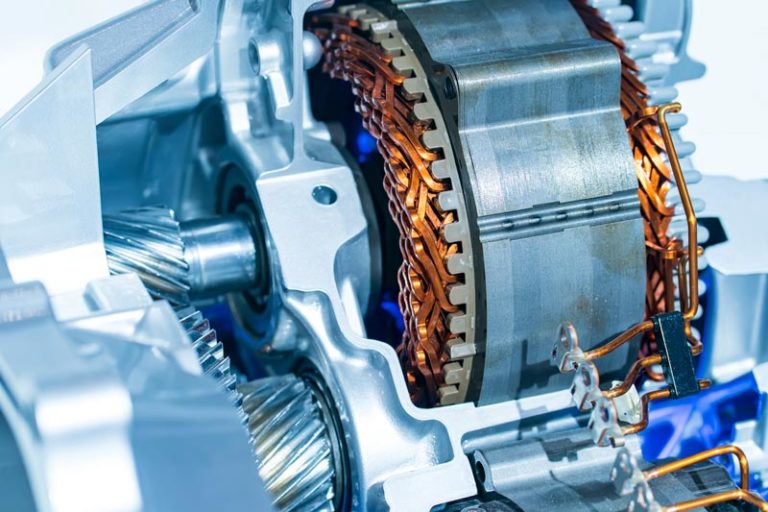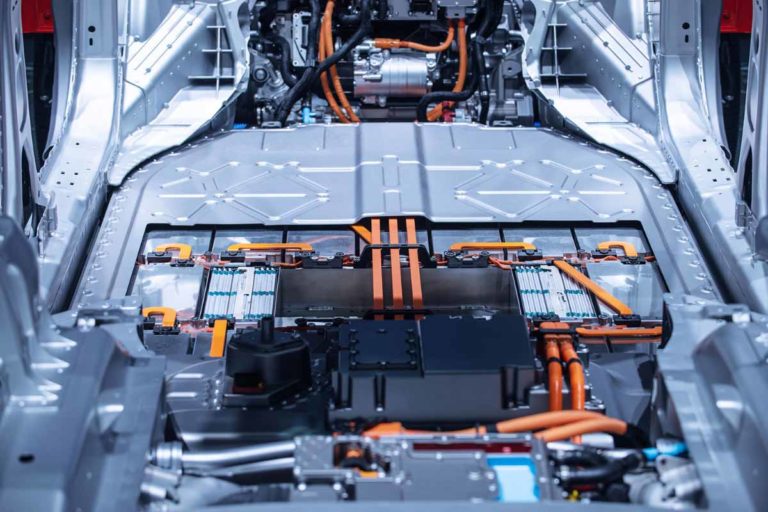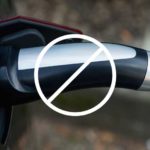Gearboxes are a key part of any traditional vehicle—they’re responsible for transferring the engine’s energy to the wheels in the most efficient way possible. But with direct drive, EVs have the option of omitting that piece. So what is the difference between Direct Drive and Transmission?
Transmission uses a gearbox to transfer power from the motor to the wheels. EV direct drive connects directly to the wheels. Transmission allows for higher torque at low speeds and higher top speeds. Direct drive requires less maintenance and is more efficient.
In this article, I will break down the advantages of each system and how to choose between direct drive and transmission. Each one has its own advantages, but as you’ll see, one is much more efficient than the other.
- Direct Drive vs. Transmission
- The Verdict
- What Is Direct Drive Transmission?
- Why Do Some Electric Vehicles Use Direct Drive Systems?
- How Does a Direct Drive System Affect the Energy Efficiency of an Electric Vehicle?
- Do Transmissions Add Extra Weight to Electric Vehicles?
- Are Transmissions in Electric Vehicles Prone to Maintenance Issues?
- How Does a Transmission Impact the Driving Range of an Electric Vehicle?
- Which Type of Electric Vehicle Benefits More from a Direct Drive System?
- Can a Direct Drive Electric Vehicle Achieve High Speeds?
- Do Electric Cars Have Gearboxes?
- Do Electric Cars Have Gearboxes?
Direct Drive vs. Transmission
In direct-drive EVs, the electric motor is directly connected to the vehicle’s wheels. This means fewer moving parts, reduced maintenance costs, and a longer life for the engine. It also means there is no need for a transmission.
On the other hand, transmission electric cars use an electric motor to turn an input shaft of a transmission. The output shaft of the transmission turns the wheels of the vehicle.
While transmissions offer better control of the vehicle’s torque to the wheels in different driving conditions, they require more complex manufacturing, add extra weight and complexity to the vehicle’s drivetrain, and may cause more maintenance issues over time because of their additional moving parts.
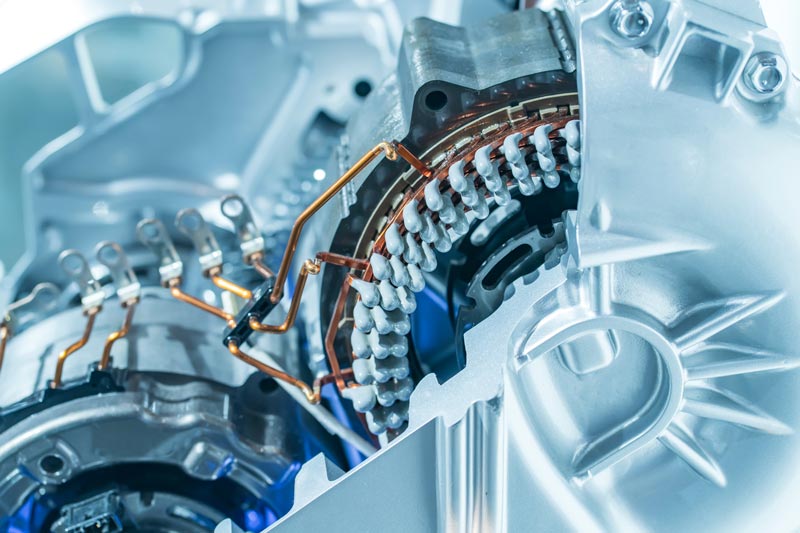
Direct drive systems like Tesla’s have no transmission. Still, most EV makers use a transmission to control gear ratios.
Having a direct drive in an electric car means there is no gearbox between the motor and the wheels. A gearbox transfers power from the engine to the wheels and changes the motor’s rotational speed to suit different driving conditions. It contains several gear ratios that the car can switch between, allowing it to go faster or slower as needed.
What Does Direct Drive Mean?
On the other hand, a direct drive system does not have a gearbox but rather a single gear ratio, which may not be ideal for all driving conditions. In some cases, an electric motor attached directly to the wheel will produce enough torque, but in others, it will require too much energy from the battery pack.
The lack of a gearbox also means that many of the components inside an electric vehicle—such as the batteries, motors, and controllers—must be larger than they would be in a transmission-equipped car. This increases weight and raises costs.
Direct drive systems are more common in large vehicles with relatively low top speeds, such as buses or delivery trucks. Their low maintenance costs and reduced complexity make them more economical than vehicles with a conventional transmission.
Both direct-drive and transmission systems have their own unique advantages. Let’s look at them in more detail.
The Pros and Cons of Direct Drive
Pros
- Energy efficient. Direct drive systems are designed to increase energy efficiency and reduce maintenance costs. This type of EV consists of only one moving part—the wheel—, which increases its durability.
- Easier to operate. If you select an EV with direct drive, you won’t have to worry about changing gears or using a clutch while driving. This helps make these vehicles easier to operate—they don’t require any driver input other than accelerating or braking.
- Smooth acceleration. A direct drive system, because it has no gears, allows for smooth acceleration. The reason is that there are no gear shifts that would otherwise be felt by the driver. There’s a reason gear shifts are also known as ‘kickdowns’. Smooth acceleration makes for safer driving and allows for better control over the vehicle.
- Low maintenance costs. As there are no gears in a direct drive system, drivers don’t have to worry about changing their gearbox oil or replacing the clutch plate periodically. This leads to lower maintenance costs over time and less hassle for drivers. It also results in less wear and tear on the car itself.
Cons
The downside —if you want to call it that— of a direct drive is that the motor needs to be big enough to provide maximum torque at all times.
This is why most direct-drive cars have been tiny urban runabouts like Smart cars, BMW’s i3 city runabout, and Renault’s Twizy electric quadricycle. But even in one of those, an electric motor has to be relatively large and powerful.
Other problems include:
- Lack of power
- Noise pollution
- Higher costs
Watch this video by Lesics about how an electric direct drive works:
The Pros and Cons of Having Transmission in an Electric Vehicle
Pros
- Transmissions can optimize the torque in each gear. In a traditional car, the engine produces less torque at higher speeds and more torque at lower speeds. However, an EV’s torque curve is relatively flat. A transmission helps optimize the amount of torque for each gear ratio, which leads to better acceleration performance.
- A transmission improves the top speed at the expense of acceleration performance. However, in an EV, there’s no need to compromise on acceleration performance. There’s no noise or emissions penalty to be paid for greater motor speeds—and so much higher top speeds.
Cons
Transmissions have moving parts, which add weight and cost to the vehicle they’re in. They also have friction, which causes them to lose efficiency. These losses drain power from the engine and slow the car down.
Transmission adds complexity, cost, and weight to the vehicle. This ends up being their biggest con.
Like with internal combustion engines, transmissions need maintenance and can break down. In the best case, this may be annoying and expensive.
If your transmission breaks down, you might have to have your car towed to the repair shop. But if it breaks down while driving, it could potentially cause serious harm to your vehicle’s moving parts.
Transmissions are complex and need maintenance or replacement after a specific time. After all, the more moving parts something has, the more things can go wrong with it.
In electric vehicles, this is particularly problematic because transmissions are connected to the motor through a drive shaft. To fix a problem, you need to remove that drive shaft and open up the transmission casing.
The Verdict
| Direct Drive | Transmission | ||
| Pros | Cons | Pros | Cons |
| Smooth Acceleration | Lack of Power | Optimized Torque | Complexity |
| Low Maintenance Cost | Noise Pollution | Achieves Higher Speeds Easier | Maintenance Cost |
| No Need To Change Gear | Higher Costs | Can Control Torque Depending on Need | Weight |
| Easy To Drive | Difficulty Operating at Highway Speeds | Easy To Use in City and Highway |
In the end, this discussion (EV direct drive vs transmission) comes down to efficiency. And transmission, although complex, is still more efficient than direct drive.
This means less energy is wasted on overcoming rolling resistance and drag while cruising at highway speeds, which improves the driving range of an EV.
Also, by having more gears, an EV can take advantage of different-sized motors for different situations. A small motor will help improve efficiency during city driving when full power isn’t needed, but a larger motor will be better for highway driving.
What Is Direct Drive Transmission?
A direct drive transmission refers to a type of power transmission system that allows torque to be transferred directly from the engine to the wheels without the need for any intermediate gearing mechanism.
This technology is commonly used in electric vehicles and some high-performance sports cars. In direct drive transmissions, the engine’s output shaft is connected directly to the wheels, eliminating the need for a traditional gearbox and clutch. This design offers several advantages, including improved efficiency, reduced complexity, and smoother acceleration.
Additionally, direct drive transmissions can provide a more seamless driving experience due to the absence of gear shifts.
However, they may have limited top speeds and could be less suitable for applications that require a wide range of gear ratios.
Why Do Some Electric Vehicles Use Direct Drive Systems?
Direct drive systems are preferred in certain electric vehicles because they offer simplicity, reduced maintenance requirements, and a smoother driving experience. These systems are particularly well-suited for smaller city cars and buses, where ease of operation and energy efficiency are essential.
By eliminating the need for a complex transmission, direct drive systems simplify the drivetrain and contribute to lower operational costs.
How Does a Direct Drive System Affect the Energy Efficiency of an Electric Vehicle?
Direct drive systems significantly enhance the energy efficiency of electric vehicles. They achieve this by minimizing the number of moving parts and eliminating gear shifts.
With fewer components, there are fewer opportunities for energy losses, resulting in improved overall efficiency. This efficiency translates to a longer driving range per battery charge and reduced energy consumption.
Do Transmissions Add Extra Weight to Electric Vehicles?
Transmissions do add extra weight to electric vehicles. Due to their intricate mechanical components, an EV transmission contributes to the overall weight of the vehicle.
This additional weight can affect the vehicle’s efficiency, handling, and overall performance. Manufacturers need to strike a balance between the benefits of a transmission and the weight it adds.
Are Transmissions in Electric Vehicles Prone to Maintenance Issues?
Similar to transmissions in traditional internal combustion vehicles, transmissions in electric vehicles can require maintenance and may experience issues over time.
Routine maintenance, such as fluid changes and inspections, is necessary to ensure proper operation. Electric car transmission problems can result in added costs and inconvenience for vehicle owners.
How Does a Transmission Impact the Driving Range of an Electric Vehicle?
Transmissions can have a positive impact on the driving range of electric vehicles, especially at higher speeds. By optimizing torque delivery and motor efficiency, transmissions reduce energy losses. This increased efficiency means less energy is wasted on overcoming rolling resistance and aerodynamic drag when driving at highway speeds, ultimately extending the vehicle’s range per charge.
Which Type of Electric Vehicle Benefits More from a Direct Drive System?
Direct drive systems are particularly beneficial for smaller electric vehicles designed for urban commuting and short trips. These vehicles prioritize simplicity, low maintenance costs, and ease of operation. Direct drive systems are well-suited for such applications, where the emphasis is on energy efficiency and straightforward driving.
Can a Direct Drive Electric Vehicle Achieve High Speeds?
While direct drive electric vehicles are capable of achieving reasonable speeds, they may not excel at high-speed performance. The single gear ratio of a direct drive system may limit its efficiency and acceleration capabilities at higher speeds. Therefore, direct drive electric vehicles are better suited for city driving rather than high-speed highway travel.
Do Electric Cars Have Gearboxes?
Electric cars with direct drive do not require traditional gearboxes like their gasoline-powered counterparts. The electric motor in an EV operates in a different way, allowing for a smooth and continuous flow of power to the wheels. This eliminates the need for changing gears manually or automatically, making the driving experience in an electric car simpler and more effortless. The absence of a gearbox in electric cars contributes to their overall efficiency, reduced maintenance costs, and quieter operation.
Do Electric Cars Have Gearboxes?
Electric cars, unlike traditional gasoline or diesel vehicles, typically don’t have the kind of multi-speed gearboxes you find in conventional transmissions. Instead, most electric cars use a setup known as a “single-speed transmission” or “direct drive.”
In a direct drive system, there’s no need for gears or shifting. The electric motor connects directly to the wheels, making the whole driving experience wonderfully smooth. You don’t have to worry about changing gears or using a clutch, which can be a relief for many drivers.
This simplicity is one of the charms of electric cars. They’re like giant, silent go-karts, with power delivered seamlessly to the wheels for a pleasantly quiet and smooth ride. Plus, without the complexity of a multi-speed gearbox, electric cars tend to be more reliable and require less maintenance in the long run.
So, in a nutshell, electric cars do have a form of gearbox, but it’s vastly different from the gearboxes in traditional vehicles. It’s a single-speed transmission designed to keep things simple and efficient.
Check out these 20 great gift ideas for yourself or a Tesla fanboy.
Contact Us if you have any questions or queries.


